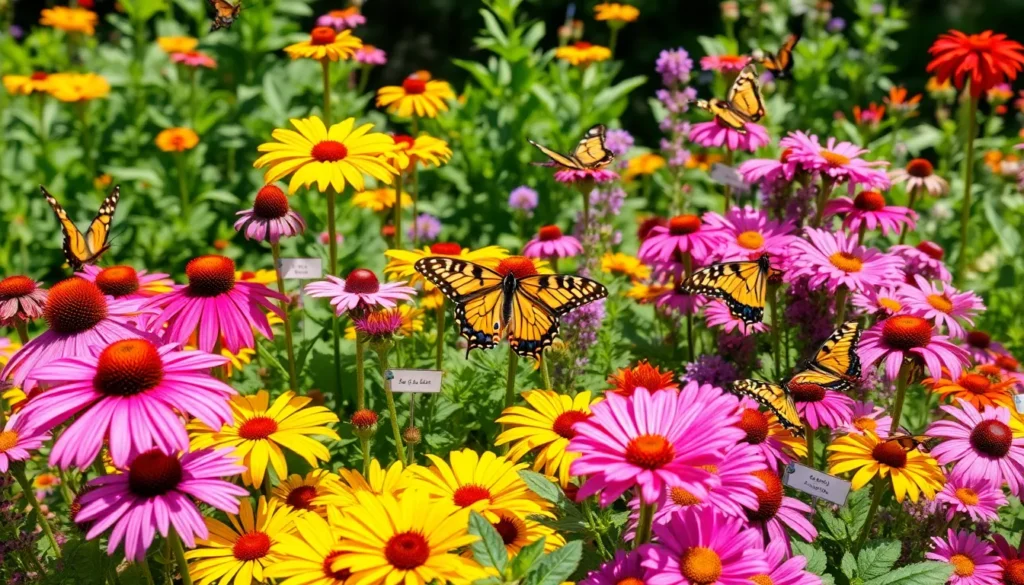Imagine stepping into your garden and being greeted by a fluttering kaleidoscope of colors. Creating a butterfly garden is not only a visually enchanting endeavor but also a significant contribution to the ecosystem. Whether you’re a novice gardener or someone with years of experience, cultivating a space that attracts these winged beauties can be a rewarding challenge. This activity invites you to broaden your gardening horizons while offering a sanctuary for butterflies to thrive.
The importance of butterfly gardens extends beyond their aesthetic appeal; they play a crucial role in supporting biodiversity and pollination. By learning to create a butterfly haven, you’ll be arming yourself with the knowledge to make a positive environmental impact. Throughout this article, you’ll discover how to select the right plants that cater to both adult butterflies and their caterpillars. You’ll also gain insights into garden design and maintenance tips that ensure your butterfly guests are well-cared for.
For those just starting out, don’t worry—creating a butterfly garden is more accessible than it seems. With a few simple steps, you can transform any outdoor space into a lively habitat that invites these delightful creatures. For seasoned gardeners, this project offers a chance to enhance your existing garden with new layers of life and movement. Join us as we explore the joy of butterfly gardening, where nature’s artistry meets your personal touch.
Choosing the Perfect Spot
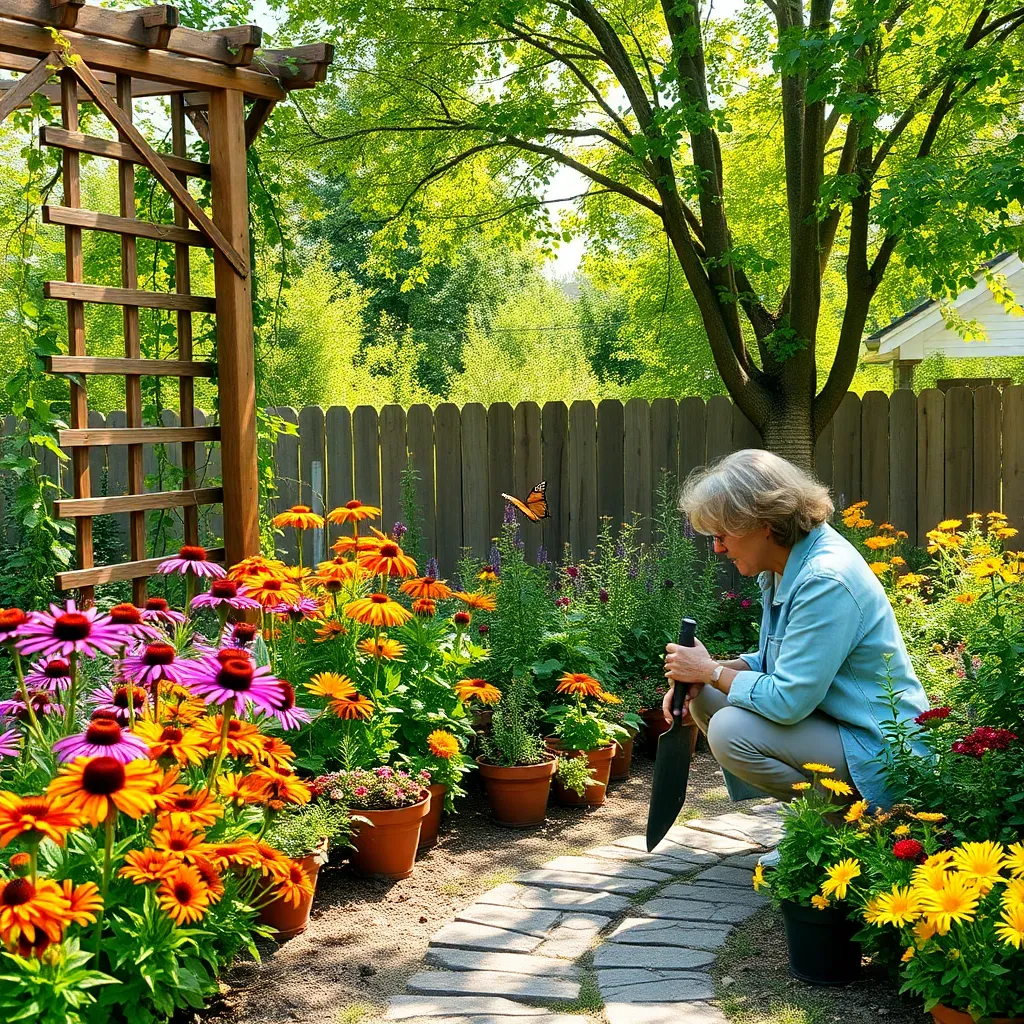
To ensure your butterfly garden thrives, selecting the right spot is crucial. Choose a location that receives at least 6 hours of sunlight daily, as most butterfly-friendly plants need full sun to produce the flowers that attract these colorful creatures.
In addition to sunlight, consider the soil quality of your potential garden area. Butterfly plants typically prefer well-draining soil, so if your soil is heavy clay, amend it with organic matter like compost to improve drainage.
For gardeners with limited space, container gardening is an excellent option for a butterfly garden. Use large pots with good drainage holes and fill them with a lightweight potting mix to create a portable garden that can be moved to catch the sun throughout the day.
Pay attention to the proximity of your garden to water sources. Butterflies are attracted to moist environments, so having a shallow water source nearby, like a birdbath or small dish with wet sand, can make your garden more inviting to them.
Designing a Butterfly Haven
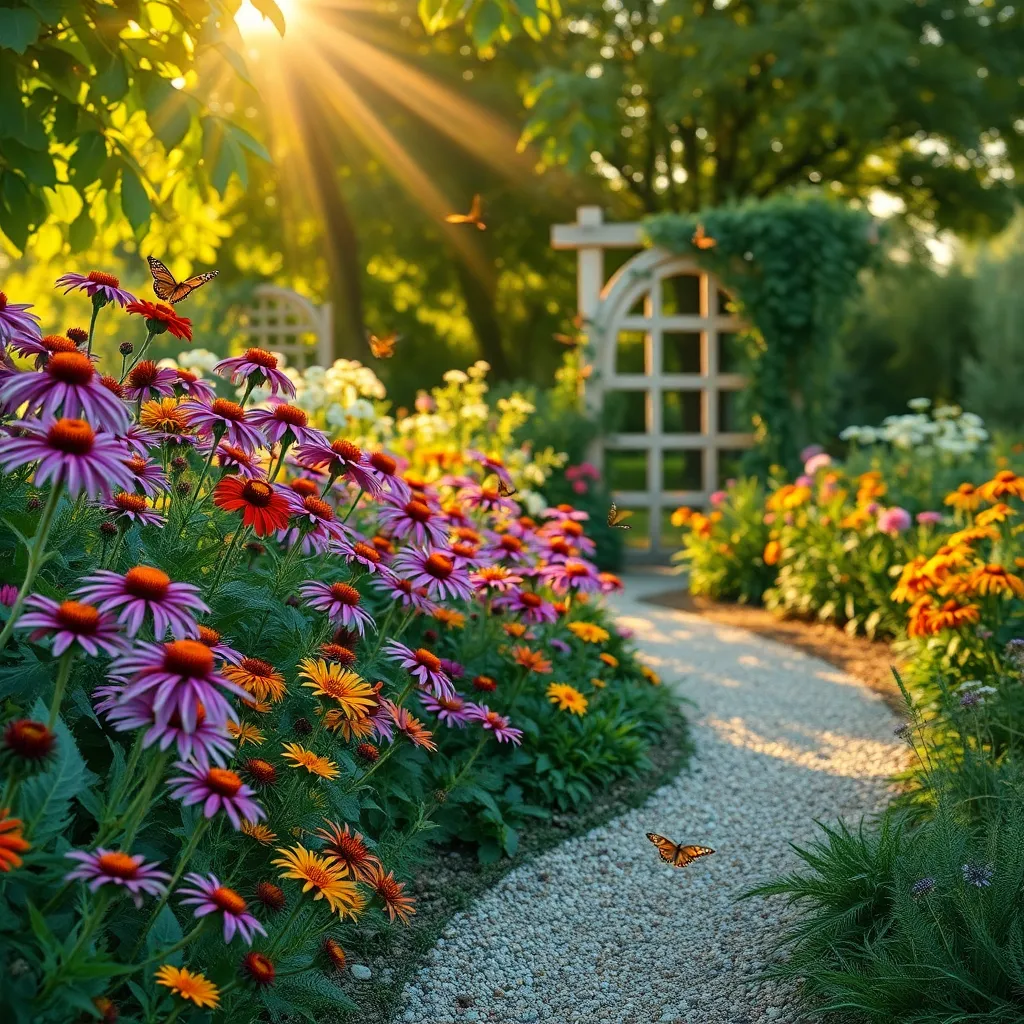
Creating a butterfly haven in your garden starts with selecting a diverse range of plants that cater to both butterflies and caterpillars. Choose a mix of nectar-rich flowers like coneflowers and lantanas to provide abundant feeding opportunities throughout the growing season.
Aim to plant in clusters, as butterflies are more attracted to larger patches of color. This approach not only enhances the visual appeal of your garden but also makes it easier for butterflies to locate food sources.
Consider adding native plants to your selection, as these are well-adapted to the local environment and often more appealing to native butterflies. Look into species such as milkweed and asters, which are both excellent for attracting monarchs and other butterfly species.
Provide a sunny, sheltered area in your garden to offer warmth and protection for butterflies to rest and sunbathe. Ensure there are flat stones or logs where butterflies can perch, as these will absorb heat, creating a perfect basking spot.
Incorporate a shallow water source, like a birdbath or a shallow dish with sand, to allow butterflies to drink and extract necessary minerals. Keep the soil moist but not waterlogged, as this balance supports both plant health and the moisture needs of butterflies.
For advanced gardeners, consider implementing a multi-layered planting strategy to create varied microhabitats. This involves combining groundcovers, shrubs, and taller plants, which can offer shelter and breeding sites for different butterfly species.
Selecting Butterfly-Friendly Plants
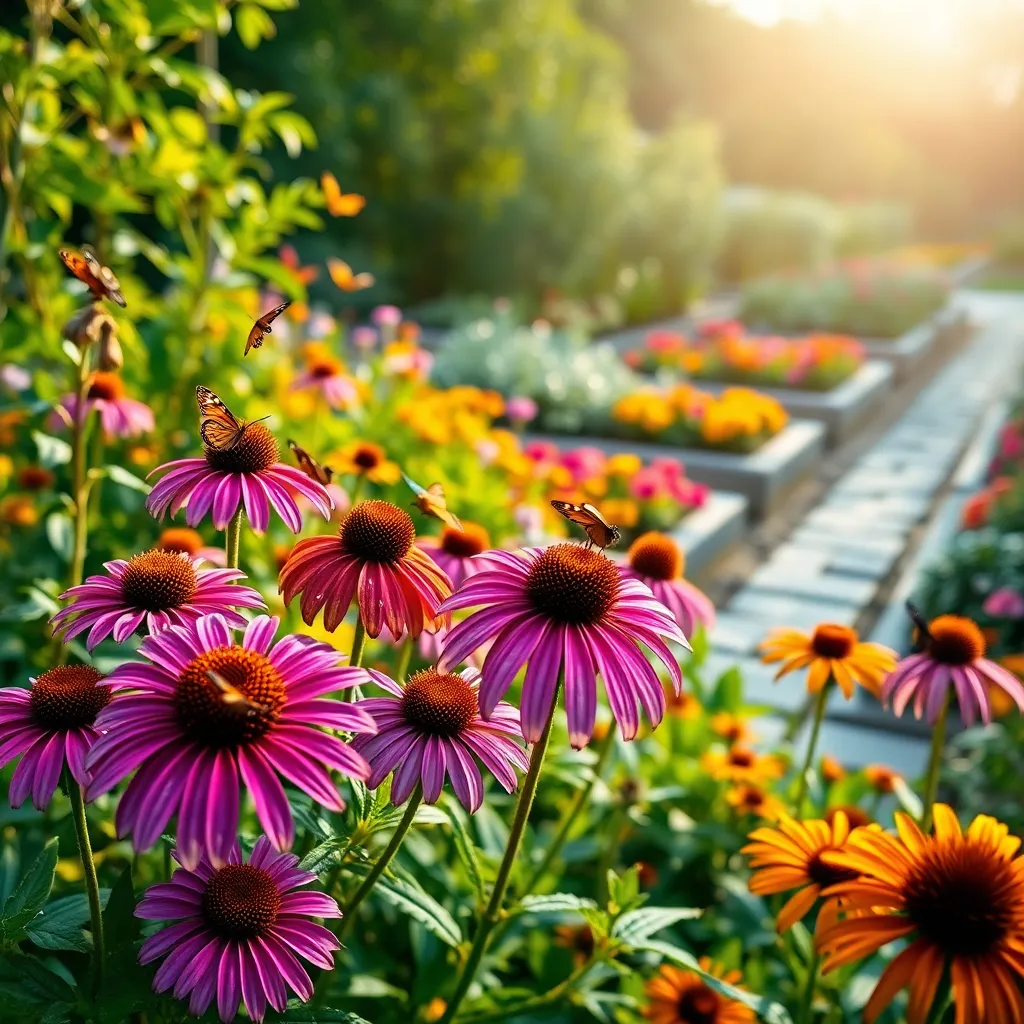
Creating a butterfly-friendly garden requires selecting the right plants that cater to the needs of both caterpillars and adult butterflies. Native plants are often the best choice as they are well-adapted to local conditions and provide familiar food sources for butterflies.
Consider planting a variety of flowers that bloom at different times of the year to provide a continuous food source. Choose plants like milkweed, coneflowers, and asters to create a vibrant and inviting environment for butterflies.
Butterflies are attracted to bright colors, so incorporating a range of hues can make your garden more appealing. Additionally, grouping similar plants together can enhance the visual impact and make it easier for butterflies to find them.
Make sure to provide both nectar plants for adult butterflies and host plants for caterpillars. For example, plant parsley or dill to support black swallowtail caterpillars and milkweed for monarchs.
Creating Nectar-Rich Zones
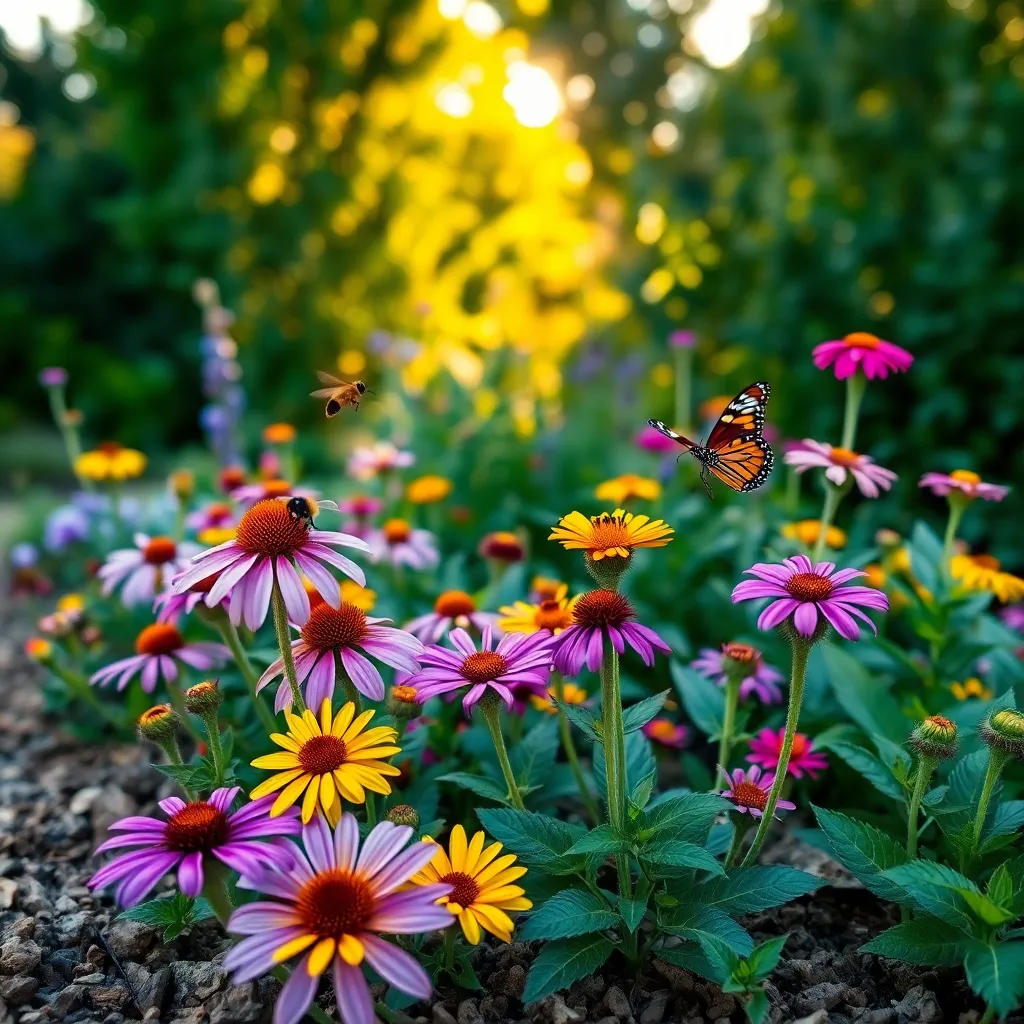
To create nectar-rich zones in your butterfly garden, focus on planting a variety of flowers that bloom at different times of the year. This ensures a continuous food source for butterflies, attracting them throughout the growing season.
Consider incorporating plants like milkweed, coneflowers, and lantanas, which are known for their high nectar content. These plants thrive in well-drained soil and require full sun to produce more blossoms, which in turn, provide more nectar.
It’s beneficial to plant in clusters to maximize the appeal to butterflies, as they are more attracted to groups of flowers. Grouping similar plants together not only enhances the visual appeal but also makes it easier for butterflies to find their food sources.
Watering your nectar-rich zones consistently is key, but be sure not to overwater. A general guideline is to water deeply once a week, allowing the soil to dry out slightly between waterings to prevent root rot.
For more advanced gardeners, consider adding a diversity of flower shapes and colors. This diversity caters to different butterfly species, each with unique feeding habits and preferences, creating a more vibrant and active environment.
Incorporating Water Features
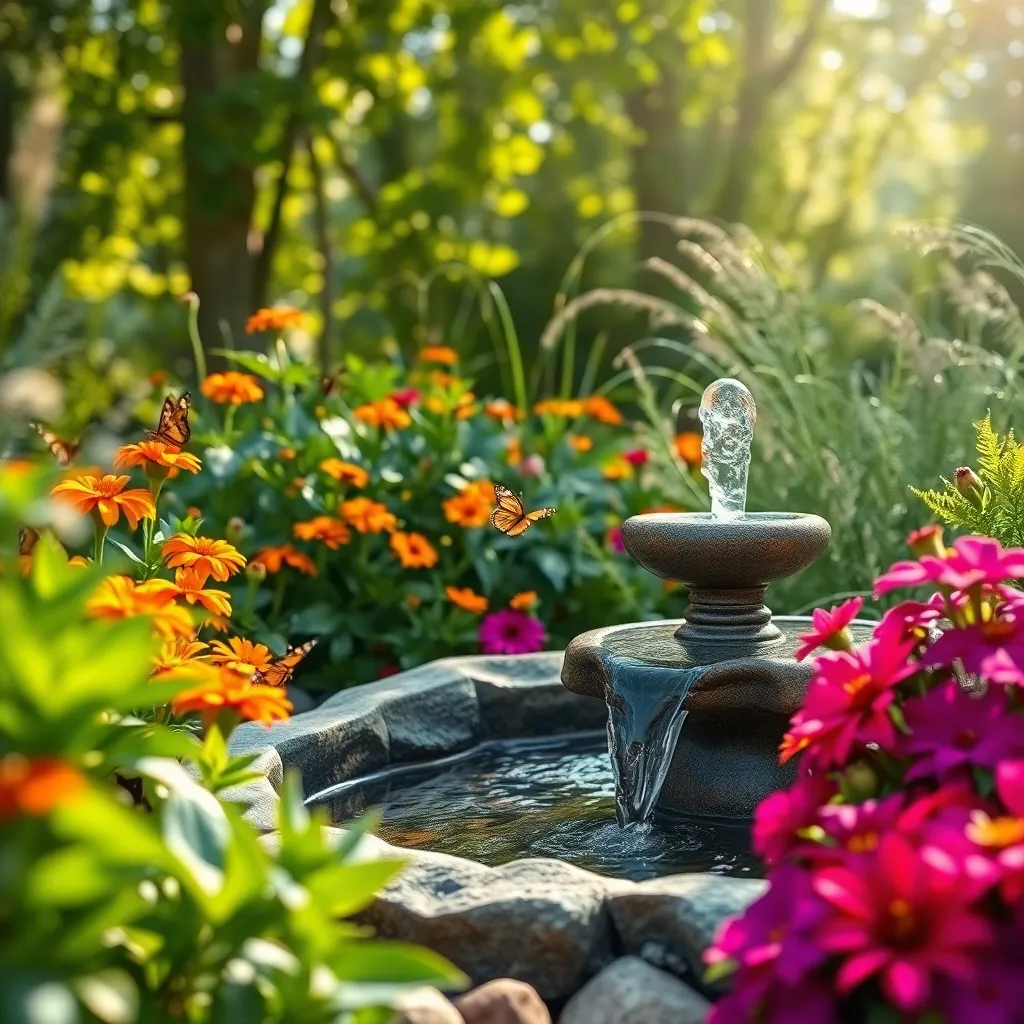
Adding water features to your butterfly garden can greatly enhance its appeal and functionality. They provide a refreshing oasis for butterflies, offering both hydration and a place to cool down, essential for their survival and well-being.
To create an effective water feature, consider installing a shallow dish or a bird bath, ensuring it is no more than an inch deep. Place a few stones or marbles inside to give butterflies a safe place to land while they drink.
Position your water feature in a sunny area, as butterflies are attracted to warmth and light. Make sure to regularly clean and refill the water to prevent the growth of algae and to keep the area hygienic for your winged visitors.
For a more advanced setup, consider adding a small fountain or a drip system. These features not only attract butterflies but also create a soothing ambiance with the sound of flowing water, enhancing your garden’s tranquility.
Providing Shelter for Butterflies
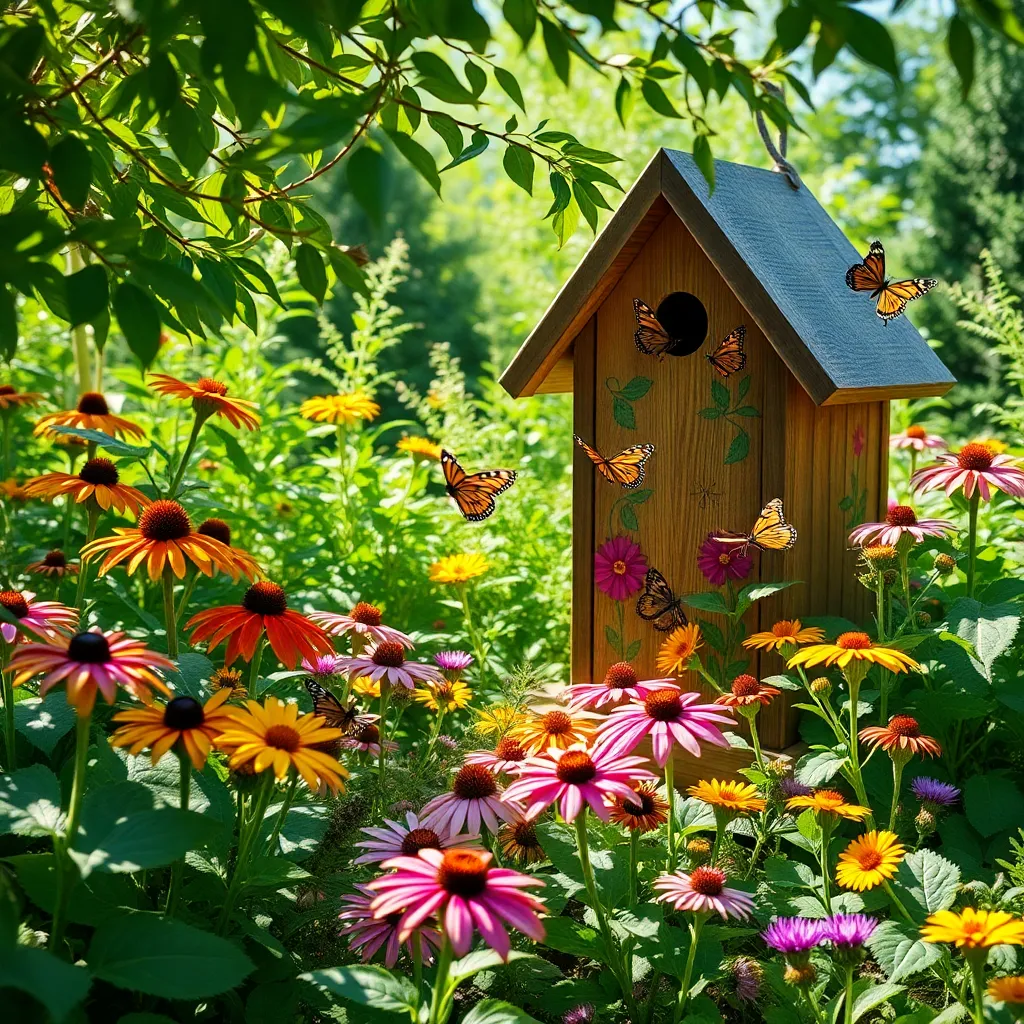
Creating a welcoming environment for butterflies means providing them with shelter from harsh weather and predators. Dense shrubs and tall grasses are excellent choices as they offer protection while being low-maintenance additions to your garden.
Consider planting a variety of native shrubs like spicebush or buttonbush, which not only provide cover but also serve as host plants for caterpillars. These shrubs thrive in well-drained soil with moderate watering, making them an easy choice for many garden settings.
For a more structured approach, you can install a butterfly house. These small, box-like structures have narrow slits, providing a safe retreat for butterflies during inclement weather.
Make sure to position your butterfly house in a sunny spot, ideally facing south or southeast, to ensure it warms up in the morning. Regularly check and clean these houses to prevent pests and ensure they remain an inviting sanctuary for butterflies.
Maintaining Your Butterfly Garden

Regular maintenance is crucial to keep your butterfly garden thriving. Begin by inspecting your plants weekly to identify any signs of pests or diseases early on.
Focus on watering your butterfly garden consistently, especially during dry spells. Aim to water deeply once or twice a week, ensuring the soil remains moist but not waterlogged.
Deadheading spent blooms encourages new growth and can prolong the flowering period of your nectar plants. This simple task not only keeps your garden looking tidy but also provides additional food sources for butterflies.
For a more robust garden, consider enriching the soil with organic matter like compost or well-rotted manure. This practice improves soil structure and provides essential nutrients to plants, promoting healthier growth.
Advanced gardeners might opt to test their soil’s pH and nutrient levels to tailor fertilization precisely. Adjusting the soil pH, if necessary, can optimize plant health and maximize bloom production.
Pruning is another essential part of maintaining your butterfly garden. Trim back any overgrown or leggy plants to encourage bushier growth and create a more inviting habitat for butterflies.
Observing and Enjoying Visitors
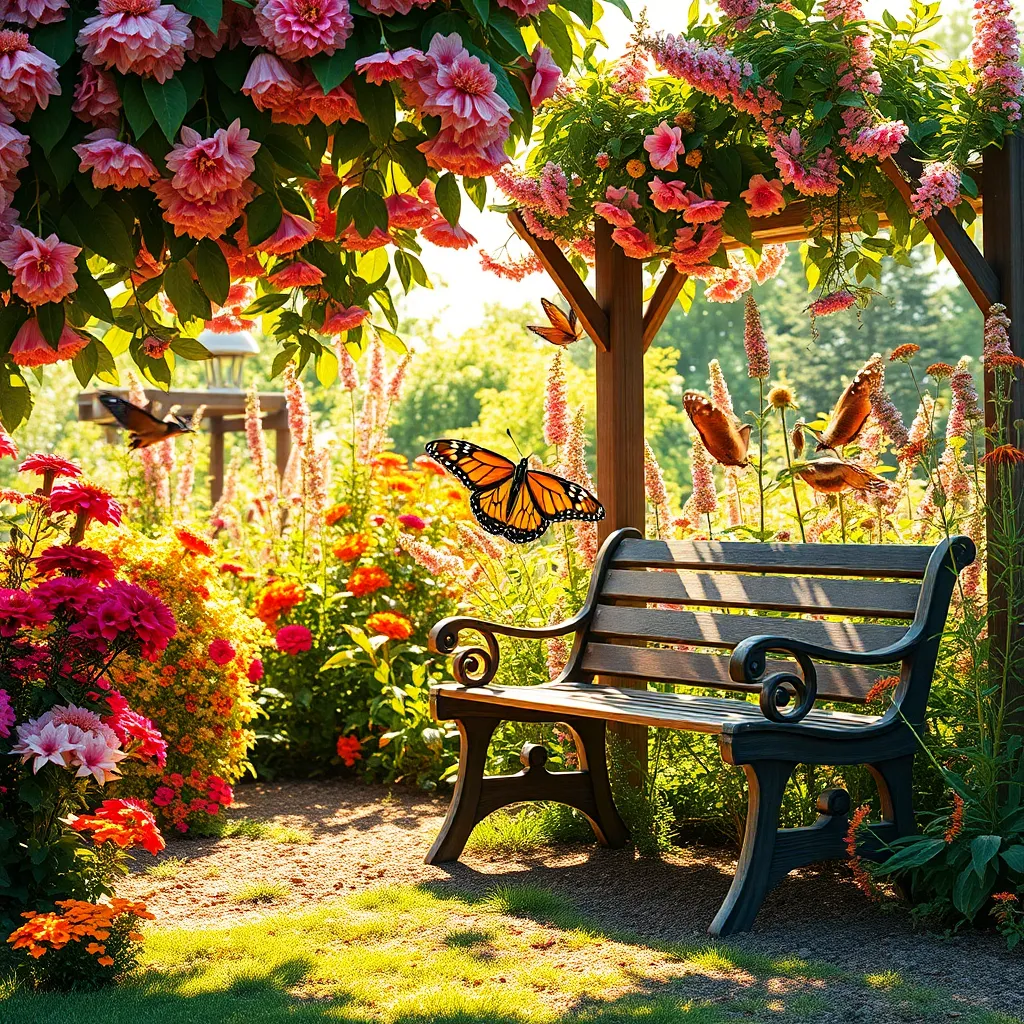
As your butterfly garden flourishes, it will become an inviting haven for these delicate creatures. Observing butterflies can be both a relaxing and educational experience, allowing you to appreciate nature’s intricate beauty right in your backyard.
To attract a wide variety of butterflies, ensure you have a diverse selection of nectar-rich plants. These plants should bloom at different times throughout the growing season, providing a continuous food source.
Position seating areas or benches strategically near clusters of flowering plants. This enables you to comfortably watch butterflies fluttering around without disturbing their natural behavior.
Incorporating a small shallow water feature is beneficial, as butterflies often seek moisture and minerals from damp areas. You can create a simple butterfly puddling station by filling a shallow dish with sand and water, ensuring that the sand remains moist but not submerged.
For those looking to delve deeper into butterfly gardening, consider keeping a journal to record the variety and frequency of visitors. This can help you adjust your plant selections over time to support more species or higher numbers of butterflies.
Remember, patience is crucial; butterflies may take some time to discover and frequent your garden. However, once they do, your efforts will be rewarded with a vibrant display of color and life.
Conclusion: Growing Success with These Plants
As we flutter through the delightful journey of creating a butterfly garden, we uncover eight key concepts that mirror the nurturing elements of a thriving relationship. We started with the importance of laying a solid foundation, akin to preparing the soil. Next, we explored selecting the right plants, much like choosing the right words to foster growth. We delved into the art of tending and nurturing, emphasizing consistent care and attention. Attracting diversity and inviting vibrancy mirrored welcoming varied perspectives in relationships. We recognized the value of patience, celebrated natural beauty, embraced change, and, finally, understood the significance of creating a safe sanctuary for love to flourish.
Now, take a moment to reflect on these insights and choose one relationship concept to nurture today. Whether it’s expressing gratitude or listening more intently, let it be your first step towards a more enriching relationship.
I encourage you to bookmark this article as a handy reference to revisit these principles whenever you need a gentle reminder. Remember, just like a butterfly garden, relationships are a continuous work in progress. With dedication and love, they can become a beautiful sanctuary of connection and joy. Here’s to your journey toward enduring relationship success!

